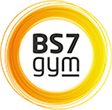14 March 2014
The good news about your training programme is that it really need not be a lengthy affair that requires large chunks of your day and great patience to remain in the gym for extended periods.
Generally speaking, a more important factor in your training than the overall duration is the intensity at which you train. Pushing harder and raising the intensity means you can get the job done in a relatively short period of time.
This approach works for a variety of programme designs covering pretty much any training goal. If you want to improve your aerobic fitness, think about using interval training at a high intensity. If you are new to this type of training you may prefer to start with longer, aerobic intervals.
As an example on the treadmill, find the fastest pace you can sustain for four minutes and use this as your work pace. Your rest pace can simply be a brisk walk or a slow jog. Start with a ratio of 1:1 so four minutes work, four minutes rest and aim to complete four high intervals. As you improve, take the speed up and work time down aiming for 30 seconds sprinting with 90 seconds recovery. 10 repetitions of this would be a good target. This will increase your speed and muscle resistance to fatigue as well as your aerobic endurance, so more bang for your buck!
If you are focused on weight loss the same approach is more effective than conventional long slow training. You will burn more energy while training and leave your body in a higher gear, burning more calories for many hours (potentially a whole day) after training finishes. Plus you’ll see much better fitness improvements with this method. Hypertrophy (increase muscle size) and strength training should also focus mainly on the intensity of the sessions over duration. For hypertrophy, you should aim to be working for 10 reps at 85% of your 10RM (the most weight you can lift for 10 reps with good form)or above for a minimum of three sets of three (compound) exercises. Strength work should be for 5 reps at an intensity from 80% of your 5RM (the most weight you can lift five times with good from), again a minimum of three sets of three exercises.
Sure, recovery times between sets are important and influence the duration of the session, but a session of a few compound exercises and the right intensity and rep range will produce the results in an efficient time. This approach can lead to more effective recovery and so improve subsequent training, which in-turn leads to better results.
Remember, more volume is not necessarily better and can lead to a degradation in training and results. Work hard, go home.

